Multi-media content Illustrations
Overview
Illustrations are bespoke graphics created to support content. They can help guide users through our content, present more complex visual topics, and break up information on the page. We use them as a narrative tool to pace an article, like a timeline, and aid its understanding.
Principles for illustrations
Any illustration on the ONS website will be created by the ONS Graphic Design team to ensure it is in line with our brand illustration guidelines, accessibility standards and colour palettes. Illustrations must also:
- meet a specific and clearly identified user need that is agreed by the Graphic Design and Content Design teams
- be decorative and not used to present information or data
When to use illustrations
Creating illustrations requires significant time and resource, so the Graphic Design limit their use to when they add the most value. They should mainly be used in articles that are:
- specifically targeted at and relevant to a general public audience, like our inquiring citizen persona
- related to a strong, human-interest narrative that can be clearly illustrated
We primarily use illustrations in content based on qualitative data, which we cannot display as a chart or table. The Student voices: experiences of the rising cost of living (opens in a new tab) article uses an illustration to add personality and related imagery to the quotes. The images help to articulate the emotions and experiences of the students quoted.
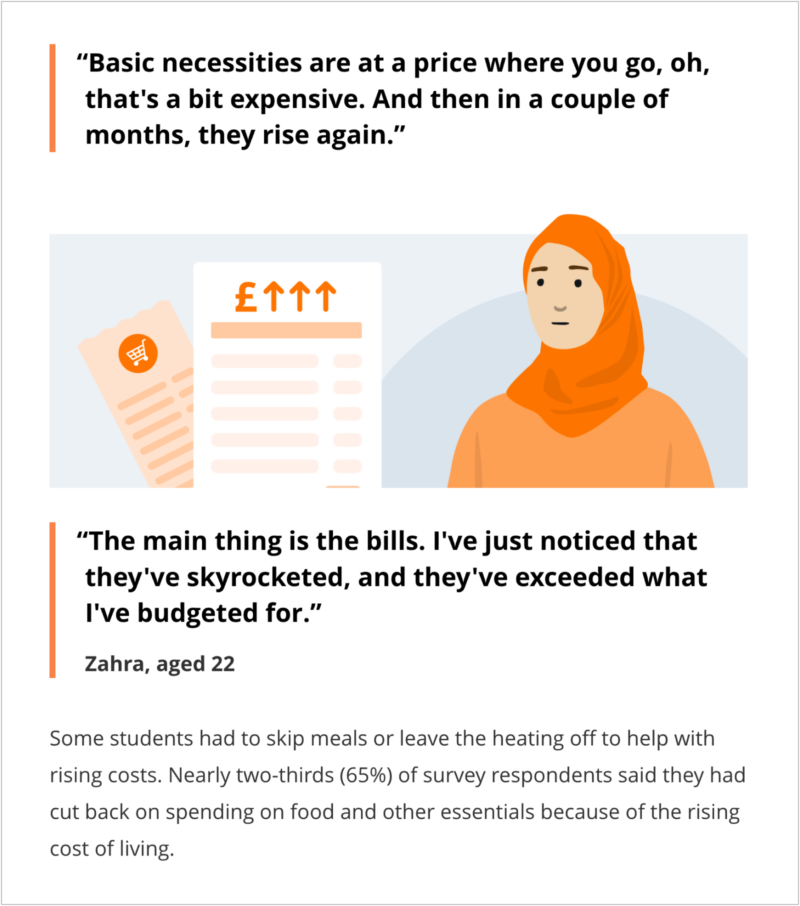
We also use illustrations as part of social media and comms campaigns, like this tweet promoting the Families and households in the UK: 2023 bulletin (opens in a new tab) .
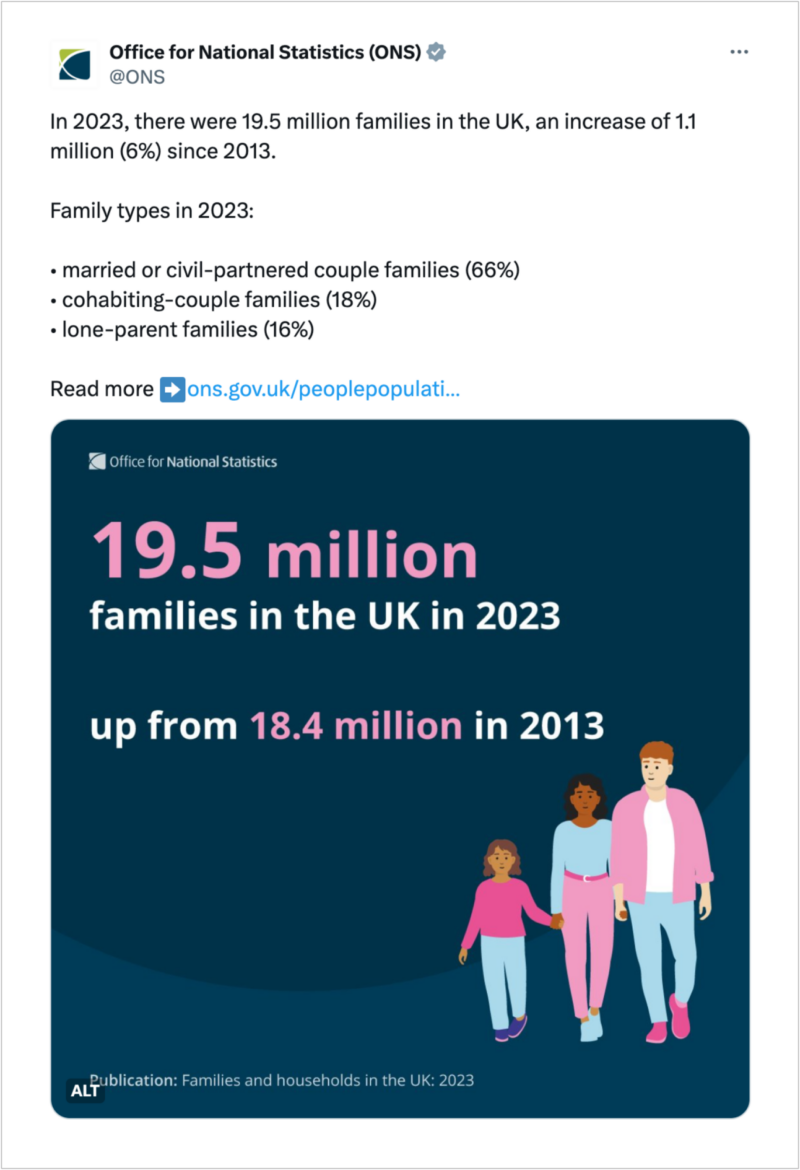
There is a separate policy for the use of diagrams on the website. Read more in our diagrams guidance.
Examples of illustrations
Article
Experiences of displaced young people (opens in a new tab)
Type of illustration
Illustrative headers at top of sections.
Reasons for including illustrations
- Human interest story.
- Based on qualitative data, using quotes throughout.
- Illustrative headers helped provide context for each section.
- Had an accompanying video, (opens in a new tab) whose visuals thematically matched the illustrative headers
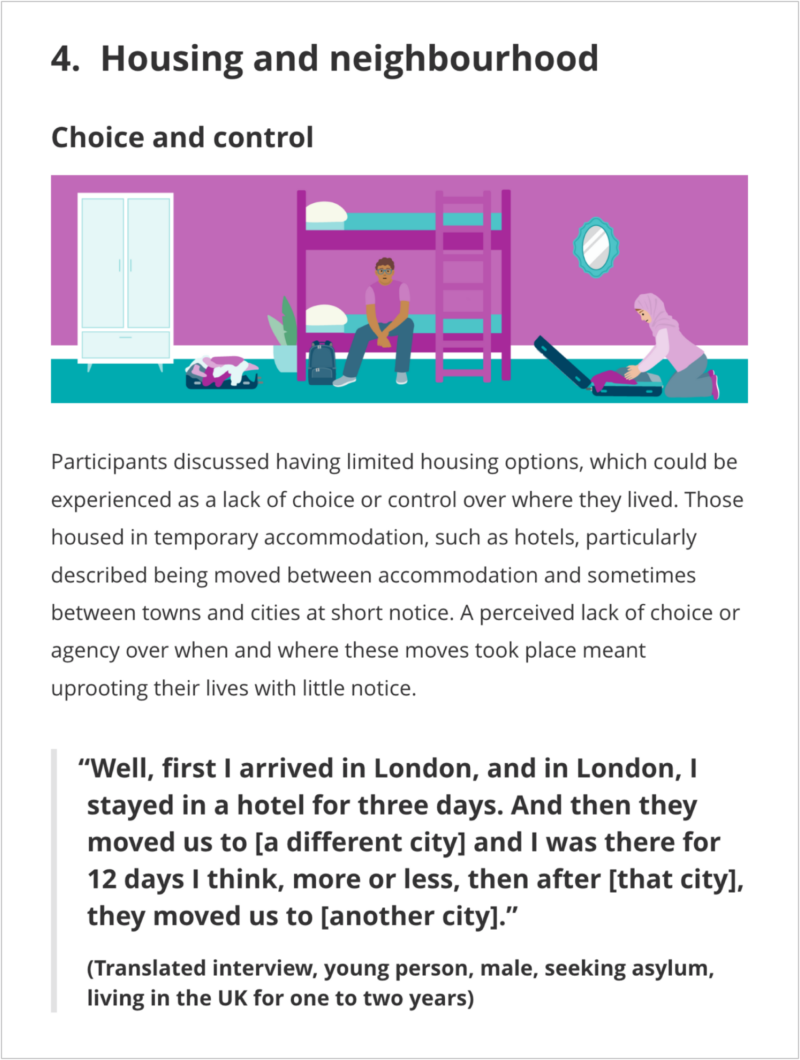
Article
Domestic abuse survivors' experiences of temporary accommodation (opens in a new tab)
Type of illustration
Illustrative headers at top of sections.
Reasons for including illustrations
- Human interest story.
- Based on qualitative data, using quotes throughout.
- Illustrative headers helped provide context for quotes.
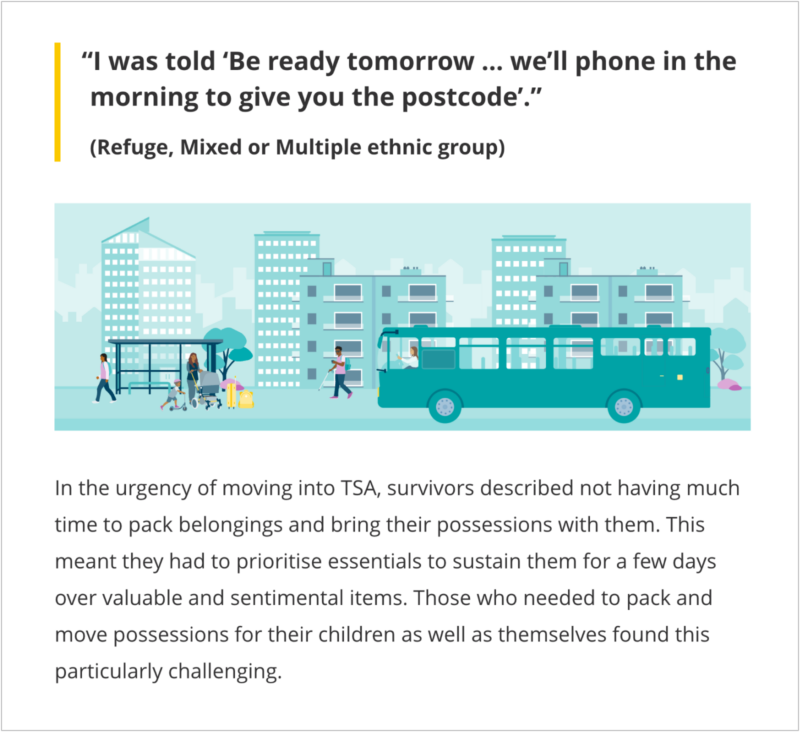
Article
Explore: Which towns attract people with advanced education (opens in a new tab)
Type of illustration
Illustration in box-out above explorer tool.
Reasons for including illustrations
- Tool with high level of interest from a general public audience.
- Illustrations helped provide context for explorer.
- Illustration captures twin themes (residential towns and universities) of date explored in tool.
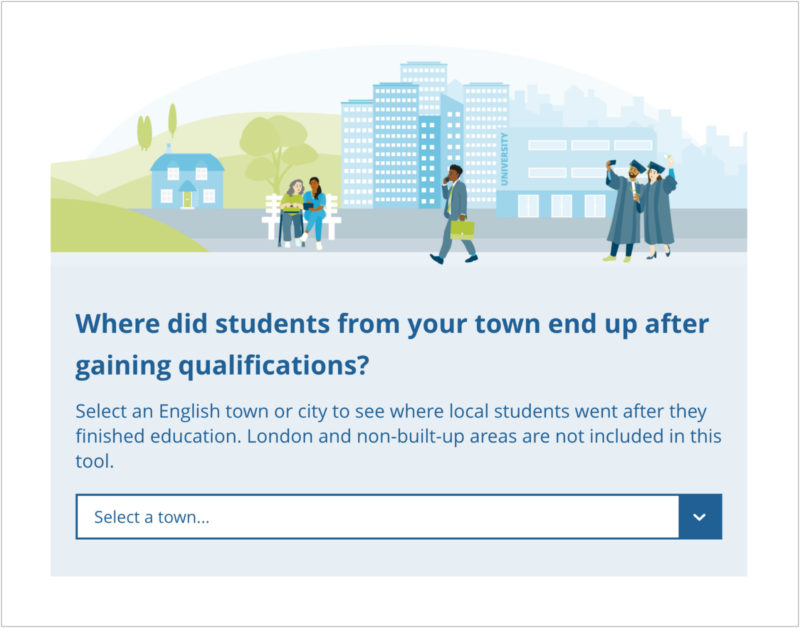
When not to use illustrations
Do not use illustrations for:
- corporate and policy information, unless part of a specific campaign
- methodologies
- standard bulletins and articles, where analysis, tables and charts tell the story better
The Graphic Design and Content Design teams will review all requests to determine if illustration is suitable for the content and if there is capacity to assist.
Process for requesting an illustration
If you can demonstrate a strong user need for an illustration, contact ons.design@ons.gov.uk (opens in a new tab) with:
- your title and release date
- a draft of your content as a SharePoint link rather than attachment
- short explanation of what you want, including the topic and how many illustrations may be needed
The Graphic Design team will need at least four weeks’ notice ahead of your publication date. This is necessary because creating illustrations requires collaboration between multiple teams in Digital Publishing and uploading them to the website occurs outside of the standard publication process.
Assessing requests for illustrations
Graphic Design will assess every request using the following criteria:
- the content is aimed at the inquiring citizen (opens in a new tab)
- there is a strong enough human-interest angle or narrative to justify the resource involved
- the team has sufficient capacity and a long-enough lead time to work on the request
If the team feels there is not a strong enough user need to justify this work, they will decline the request but work with you to find the best way to present your content.